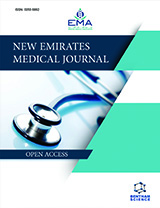Abstract
Introduction: Adsorption and mixed agglutination reactions detect A, B, and H blood group antigens in the cells. The study aimed to investigate the adsorbing abilities of group-specific polyclonal antibodies using erythrocytes and leukocytes to improve the quality of blood typing.
Material and Methods: The adsorption was performed with group B erythrocytes and leukocytes using the usual heated citrated anti-B plasma at 4°C and 37°C. A mixed agglutination reaction revealed group B antigens on leukocytes and erythrocytes.
Results: The highest adsorption of antibodies from usual plasma on erythrocytes was observed at 4°C at physiological conditions. Weaker adsorption was determined at pH 8.0 compared to pH 6.0 (the decrease of agglutination strength from 3+ to 2+ and 1+ accordingly).
The adsorption of polyclonal antibodies on erythrocytes at 37°C was the highest at pH 6.0 and 8.0 compared to physiological conditions (the decrease of agglutination strength from 3+ to 1+). In contrast, adsorption at 4°C appeared to be stronger at pH 6.0.
The adsorption of IgG antibodies on erythrocytes at 37°C was higher at pH 8.0.
Complete adsorption of IgG antibodies was observed on group B erythrocytes and leukocytes at 37°C and 4°C.
Conclusions: Adsorption of polyclonal group-specific antibodies on erythrocytes was the highest at 4°C, and adsorption of IgG antibodies was strong at 4°C and 37°C. Adsorption of leukocytes was revealed only with the use of the heated serum. IgG group-specific antibodies from the heated plasma demonstrated higher adsorbing abilities on leukocytes than IgM antibodies from plasma.



























